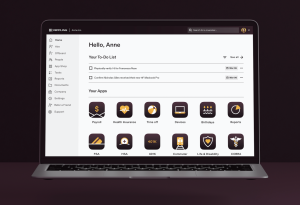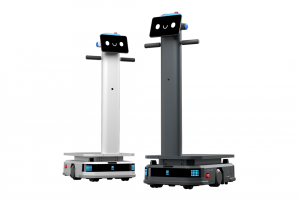Lenovo Quietly Moving to Threaten HP in the PC Market
![]() The world’s second-largest PC maker, Lenovo, doesn’t get a lot of attention compared to competitors like Hewlett-Packard (HP) and Dell. Being low key, however, certainly hasn’t negatively impacted the company’s sales. Lenovo surpassed Dell to become number two PC manufacturer right behind leader HP in 2011. It doesn’t seem Dell will be regaining its position any time soon. Should the struggling HP be concerned that Lenovo is about to oust it from the number one spot it has held since 2007?
The world’s second-largest PC maker, Lenovo, doesn’t get a lot of attention compared to competitors like Hewlett-Packard (HP) and Dell. Being low key, however, certainly hasn’t negatively impacted the company’s sales. Lenovo surpassed Dell to become number two PC manufacturer right behind leader HP in 2011. It doesn’t seem Dell will be regaining its position any time soon. Should the struggling HP be concerned that Lenovo is about to oust it from the number one spot it has held since 2007?
If you don’t know much about Lenovo, but the name sounds familiar, it is probably because Lenovo acquired IBM’s PC unit, including its iconic ThinkPad brand in 2005. The deal also made Lenovo one of the top five global PC makers based on unit sales – a title it has not shed since that time. Lenovo didn’t just appear in 2005; the company was actually founded in 1984 in Beijing. Now, the company has headquarters in Beijing, Singapore and Morrisville, North Carolina.
Smart buys, dedicated delivery
.
![]() Lenovo has been the fastest growing PC-maker in the top five for the last 10 quarters, and it does not seem to be slowing. In the fourth quarter of 2011, Lenovo reported a 37 percent year-over-year increase in sales revenue. Evaluating Lenovo’s stock performance compared to Dell and HP over the last year also illustrates the company’s impressive performance.
Lenovo has been the fastest growing PC-maker in the top five for the last 10 quarters, and it does not seem to be slowing. In the fourth quarter of 2011, Lenovo reported a 37 percent year-over-year increase in sales revenue. Evaluating Lenovo’s stock performance compared to Dell and HP over the last year also illustrates the company’s impressive performance.
Last year, Lenovo partnered with NEC. The partnership created the largest PC group in Japan and established a very strong and visible presence for Lenovo in the market. Lenovo also acquired German electronics manufacturer Medion, which doubled Lenovo’s share of German market in terms of unit sales.
Part of the reason for Lenovo’s success is likely its dedication to dominating its home country, even if that means delivering its products to remote towns in China via bicycles. Lenovo plans to defend its home market by expanding marketing to every area possible while simultaneously targeting emerging markets and the US. Lenovo calls the strategy “protect and attack.” Whatever you call it, it is clearly something that most of its competitors in the top five aren’t doing. The investment has resulted in rising revenue and control of a slightly more than 30 percent of China’s PC market. The percentage is even higher in rural areas.
More obstacles to overcome
.
Things haven’t been all happiness and sunshine for Lenovo. In spited of its efforts, the company still has not managed to fully penetrate the US market. Lenovo owns less than 7 percent of US PC market. The US enterprise market is aware of the brand, but Lenovo is mostly unknown in the consumer market. The recent recall of 188,000 computers due to the potential to burst in flames did not exactly help with its American street credibility. The company’s stock declined in the Asian markets this week after a paper in Taiwan reported Lenovo might be halving its forecasts for 2013. Lenovo responded,
“Lenovo has issued no new guidance to suppliers or manufacturing partners regarding its growth estimates and we continue to be confident that we will outgrow the market worldwide.”
However, fears over Europe and a slowdown in China’s economy seem to be prohibiting a quick recovery.
Diversifying beyond PCs
.
Like other PC makers, Lenovo is working to expand its reach beyond PCs. The company launched nine new servers at the beginning of the month and has said it plans to be one of the top three providers of servers by 2015. Lenovo has a lot of work to do if it plans on joining IBM and Hewlett-Packard. According to Gartner, servers are 17 percent of HP’s total revenue, and it owns around 29 percent of the global market. IBM owns 28 percent. Server sales weren’t even mentioned in Lenovo’s first quarter financial report, but the company says it is making significant investment in R&D for servers.
Lenovo is also partnering to provide add-ons to make its products more attractive. Lenovo partnered with SugarSync to launch Lenovo Cloud Storage, a cloud-based file sharing and collaboration offering similar to Box and DropBox. This month the company announced it was offering no contract wireless access for ThinkPad owners. The service allows users to buy mobile broadband starting in 30 minute increments for $1.95, a day for $8.95 or monthly contract-free plans for $44.95 (2GB of data) and up.
All signs indicate that Lenovo is quietly on its way to dominating the global PC market. HP should be careful not to become so distracted with its restructuring that it fails to address the growing threat from Lenovo. If HP steps away too long, when it returns it will find Lenovo in its spot.
A message from John Furrier, co-founder of SiliconANGLE:
Your vote of support is important to us and it helps us keep the content FREE.
One click below supports our mission to provide free, deep, and relevant content.
Join our community on YouTube
Join the community that includes more than 15,000 #CubeAlumni experts, including Amazon.com CEO Andy Jassy, Dell Technologies founder and CEO Michael Dell, Intel CEO Pat Gelsinger, and many more luminaries and experts.
THANK YOU













